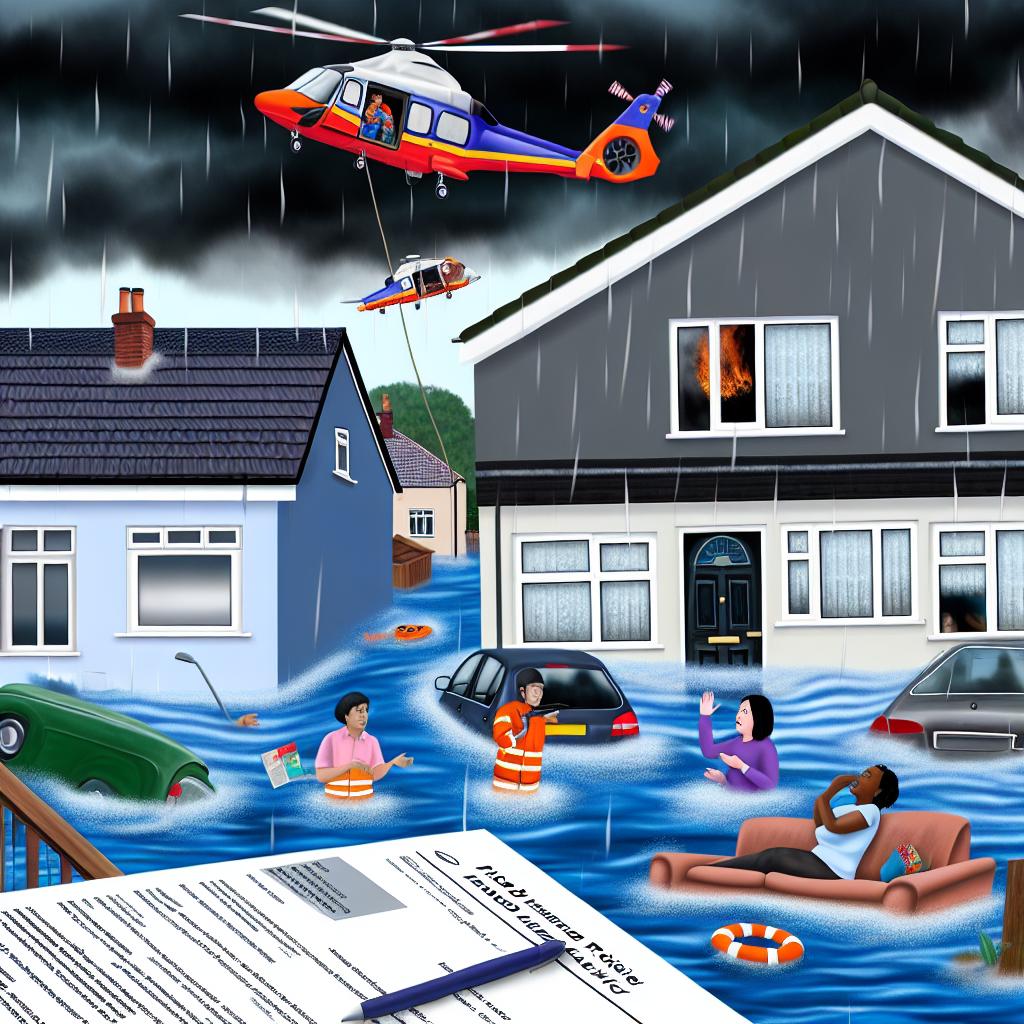Understanding Flood Insurance
Flood insurance is a critical financial safeguard for individuals living in areas susceptible to flooding. It represents a specialized form of property insurance, designed primarily to cover the damages wrought by flood events—incidents that standard homeowner’s insurance policies typically do not encompass. Unlike common water damage claims, such as those from a burst pipe or an overflowing household fixture, flood insurance fills a specific niche, ensuring that property owners receive financial protection for both their building and its contents against the ravages of floodwaters.
Why Flood Insurance Is Important
Floods are natural disasters that can arise from a multitude of sources, including but not limited to heavy rainfall, storm surges, blocked drainage systems, and the rapid melting of snow. It is a misconception that floods are only a risk to coastal or low-lying areas. The reality is that flooding is an omnipresent threat, capable of occurring virtually anywhere with varying degrees of intensity and frequency. Given its status as one of the most common and financially devastating natural disasters, floods inflict billions of dollars in damages in many countries every year. Thus, understanding the importance of flood insurance becomes crucial in mitigating these financial risks.
Coverage Details
Flood insurance is widely recognized for its dual-layered coverage, designed to safeguard both the structural integrity of a property and the personal possessions housed within:
Building Property: This aspect of flood insurance focuses on the physical structure of the home, including the foundation, walls, and essential services such as plumbing, electrical, and HVAC (heating, ventilation, and air conditioning) systems. Ensuring coverage for these components is vital because the structural loss can have lasting financial and functional implications on a property.
Personal Contents: Beyond the mere structure, floodwaters can devastate personal property, from furniture and clothing to electronics and priceless valuables. Flood insurance includes coverage for these belongings, typically up to a specified limit. This coverage ensures that individuals are not left shouldering insurmountable repair or replacement costs in the aftermath of a flood.
An important factor to note about flood insurance is the customary waiting period before the coverage becomes effective. Policyholders often face a waiting duration of approximately 30 days, underscoring the prudence of securing a policy well in advance of the flood season or any potential flood-inducing events.
Do You Need Flood Insurance?
Assessment of Flood Risk
Deciding on the necessity of flood insurance involves a careful assessment of your unique flood risk, a multi-faceted evaluation that considers factors such as geographical locale and historical data. Here are critical elements to consider when assessing flood risk:
Flood Zone Designation: The Federal Emergency Management Agency (FEMA) and similar agencies systematically classify geographical areas into flood zones based on the probability and frequency of flooding. Properties within high-risk zones, designated as Special Flood Hazard Areas, are often prime candidates for flood insurance. However, statistics reveal that over 20% of flood claims originate from locations classified as low or moderate-risk areas, making it essential for individuals in these zones to consider coverage.
History of Flooding: A property with a documented history of past flooding is often indicative of a continuing risk. Thus, homeowners should factor in past instances of flooding as a predictor of future vulnerability.
Local Regulations and Lender Requirements: In specific jurisdictions, local regulations, combined with lender stipulations, may necessitate flood insurance. Mortgage lenders, for example, often require homeowners in designated high-risk flood zones to obtain flood insurance as a condition of the loan.
Weighing Costs Versus Benefits
Cost Considerations: The financial commitment associated with flood insurance can vary significantly, influenced by factors such as the designated flood zone, the construction and age of the insured building, and the coverage limits selected by the policyholder. Consequently, while the premium embodies an additional expense, it must be measured against the substantial potential cost of flood damage, which can escalate to catastrophic levels in the absence of insurance coverage.
Peace of Mind: Ultimately, the security and assurance that accompany flood insurance can prove invaluable. For many property owners, having a policy affords a measure of peace, serving as a financial safety net that mitigates some of the uncertainties and fears inherent in post-flood recovery and rebuilding.
Conclusion
In summation, the decision to invest in flood insurance is contingent on a multitude of individual risk factors and financial considerations, underscoring the value of a tailored approach to securing a policy. It is advisable to engage with a professional insurance advisor to conduct a comprehensive assessment of your specific needs and explore available policy options. Moreover, for those seeking further information regarding flood insurance and assistance with policy selection, the FloodSmart website, managed by the National Flood Insurance Program, serves as a valuable resource for property owners navigating the complexities of flood insurance coverage.
